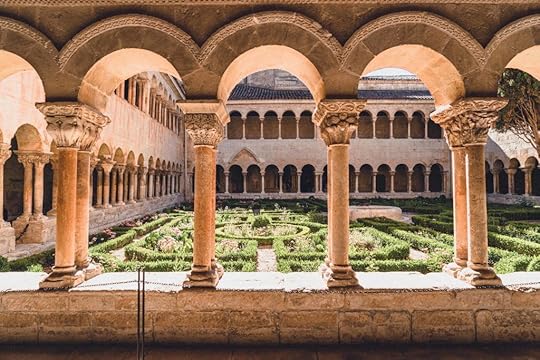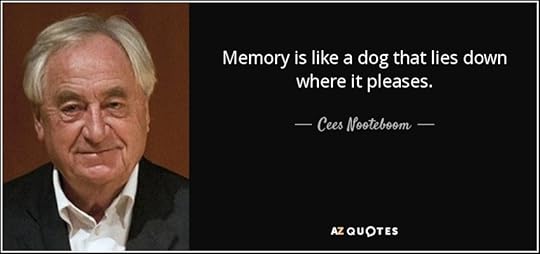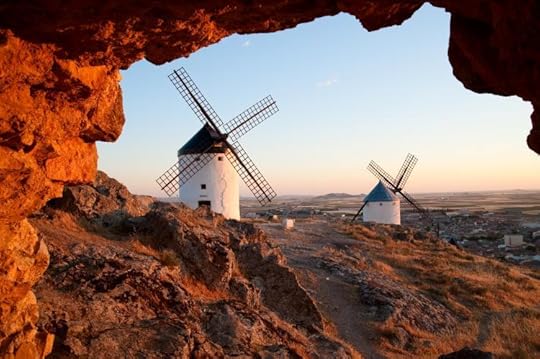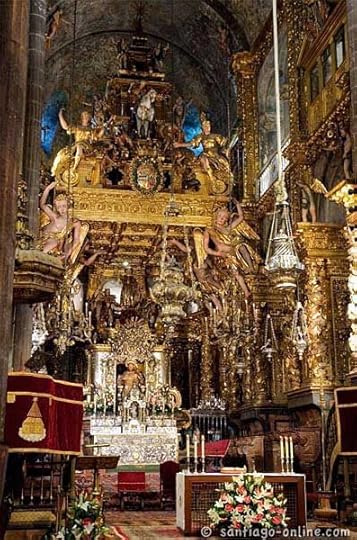What do you think?
Rate this book


412 pages, Paperback
First published January 1, 1992



The church as the representation of a higher reality is not an astonishing concept, and that such a concept gives rise to a symbolic world is something you know if you have ever been in a Greek, Buddhist or Shinto temple--in all of them you see those magic sequences of overt & covert meanings, where each image & each object acquires its rightful place within the esoteric system.Yes indeed, parts of this book are rather dense, replete with obscure terms, untranslated Latin, fanciful ruminations & soulful considerations. To some it might resemble a professorial lecture, though Cees Nooteboom is not an academic. He is however quite intellectual in his pursuits but at times also wistful & even humorous, as when he pays an entrance fee to enter the "actual home of Aldonza" from Don Quixote, a fictional character who seems vivid enough to many as to allow for such a whimsical visit.
What is so appealing about Romanesque art is that it is the 1st all-inclusive expression of such a system in its own world. A Romanesque church is cosmogony (that which deals with the origins of the universe) pictured in stone. All is meaning, morality, metaphysics and it is not Christ on the cross who occupies the centre, as in Gothic art, but Christ in Majesty, lord of the universe, creator of that strange element in which the creation is vested: time.
Within that concept everything had a meaning, from the wall to the lintel, from the vault to the baptismal font. The hunt, the seasons, the constellations, the symbols of guilt & punishment, resurrection & eternity, the bear & the snake, the raised tail & the pineapple, the chevron & the crossed axes--everything had a meaning & was legible even for those who could not read, a language of numbers & signs you clung to in a universe in which, all being well, you felt at home or at any rate felt was yours and in which the temporary world & your temporary existence was no more than a passing phase.

We no longer laugh at the world of Cervantes & his hero, his escutcheon is compassion, his banner is beauty. He stands for everything that is gentle, lost, pure, altruistic & gallant.Towns like Silos and La Mancha are just 2 detours not on the road to Santiago and there are countless more that few travelers have heard of, dusty towns that don't appear on group tours but which make this unusual pilgrimage of interest. To be sure, this is not a guidebook for those planning a camino, a walking pilgrimage to Santiago, which Nooteboom describes as
one of the arias of madness of European opera, a gigantic migratory flow, a movement of millions of extras, an unceasing stream of scallop-bearing pilgrims from all corners of Christendom, who found shelter & sustenance en route from the Pyrenees & beyond. What the massive adventure signified in terms of religious zeal, political, social, economic & artistic influence is almost impossible to imagine.

"To enter a house that once belonged to someone who never existed is no small matter."Indeed. The author visits Extremadura and we read - in a rare non-European digression - about Pizarro and the ambush in Cajamarca, Peru, where the conquistadors massacred 2,000 unarmed Incas to commence the wholesale obliteration of Inca civilization. It is a disaster when we lose all our data on a hard disk. We mourn prehistoric paintings when they are defaced. Can we imagine the total destruction of a flourishing civilization? The people, their culture, their mythology, their gods. All gone forever.
Wat is land (aarde, grond, terra) toch oneindig geduldig. Het verdraagt het gedoe van mensen bovenop zich, geen berg wordt erdoor verzet. De mensen verbouwen, irrigeren, weiden, bouwen burgen en dorpen, leggen wegen aan, maar de massa van het land blijft hetzelfde, blijft geduldig liggen, stuwt bomen en graan de lucht in, laat op zich vissen, jagen en oorlog voeren, laat zich koninkrijk, provincie, graafschap, bisdom, kalifaat, vrijstaat noemen, laat zich indelen in die arbitraire, bijna nooit natuurlijke, door mensen bedachte, en dus niet echt zichtbaar bestaande dingen die grenzen zijn, heet steeds anders, en blijft zichzelf.
En nu begreep hij dat de mens nooit weet voor wie hij lijdt of hoopt. Hij lijdt en hoopt en zwoegt voor mensen die hij nooit zal kennen, en die zelf op hun beurt zullen lijden en hopen en zwoegen voor anderen die evenmin gelukkig zullen worden, want de mens zoekt altijd naar een geluk dat groter is dan voor hem werd weggelegd. De grootsheid van de mens zit echter in het feit dat hij beter wil zijn dan hij is, in het zichzelf opleggen van taken. In het Koninkrijk der Hemelen is geen grandeur te winnen, omdat daar een gevestigde hiërarchie bestaat. Het onbekende is onthuld, het bestaan is oneindig, opoffering is niet mogelijk, alles is rust en vreugde. Daarom kan de mens, gebukt onder lijden en plichten, prachtig temidden van zijn ellende, onder alle plagen in staat tot liefhebben, de grootsheid, de hoogste graad van menszijn, slechts vinden in het Koninkrijk van deze Wereld.